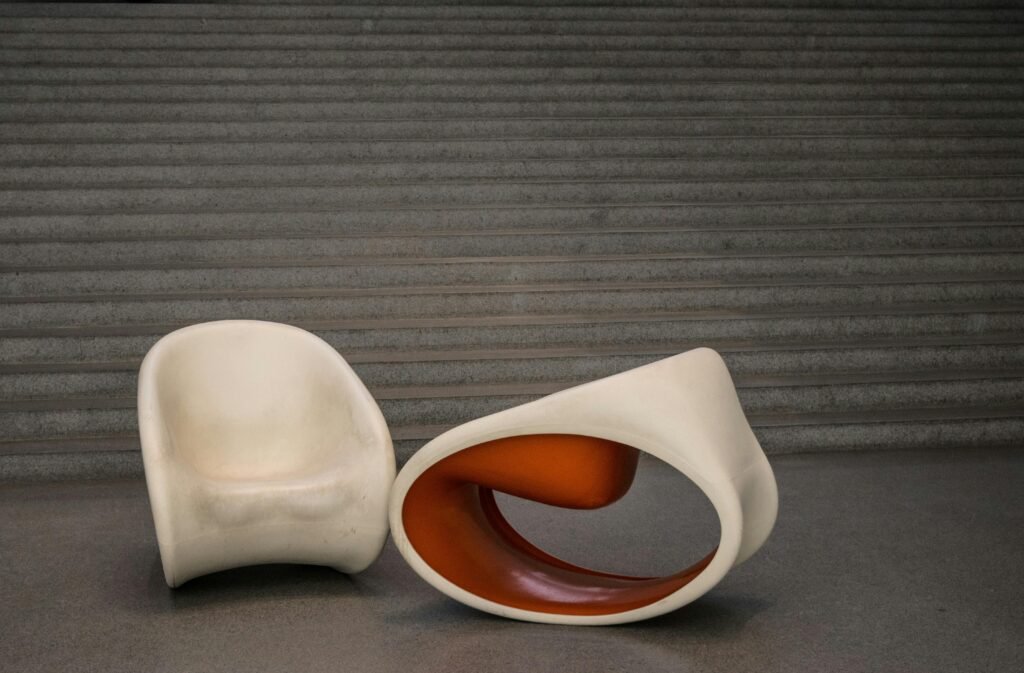You’ll be surprised how easy it can be to restore the beauty and functionality of your chairs with a few simple tricks. From loose or squeaky legs to torn upholstery, this article will guide you through the process of repairing common wear and tear on chairs. Whether you’re dealing with a classic wooden chair or a modern office chair, we’ve got you covered. Say goodbye to uncomfortable seating or unsightly furniture and say hello to a chair that looks good as new, thanks to these helpful tips and techniques.

This image is property of images.pexels.com.
Cleaning and Dusting
Vacuuming the chair
Keeping your chair clean is essential for maintaining its appearance and longevity. Start by vacuuming the chair to remove any loose dirt and debris. Use a brush attachment to gently vacuum all areas of the chair, including the seat, backrest, and arms. Be sure to pay attention to crevices and corners where dust and dirt can accumulate.
Dusting with a microfiber cloth
After vacuuming, it’s time to give your chair a thorough dusting. Grab a microfiber cloth and lightly dampen it with water or a mild cleaning solution. Gently wipe down the entire chair, making sure to get into all the nooks and crannies. Microfiber cloths are great for dusting because they attract and trap dust, rather than just pushing it around.
Using a fabric brush to remove dirt
If your chair has fabric upholstery, you may notice some dirt or pet hair embedded in the fibers. To remove stubborn dirt, use a fabric brush or a soft-bristled brush. Gently brush the fabric in a back-and-forth motion to loosen any dirt or debris. Once you’ve brushed the entire chair, use a vacuum to remove any loosened dirt. This step will leave your chair looking refreshed and clean.
Fixing Loose Joints
Identifying loose joints
Over time, the joints of a chair may become loose or wobbly. It’s important to identify which joints are causing the issue before proceeding with any repairs. Sit in the chair and carefully rock back and forth to determine which joints are loose or unstable. Take note of these joints as you will focus your repair efforts on them.
Applying wood glue to the loose joint
Once you’ve identified the loose joint, it’s time to fix it. Start by applying wood glue to the joint. Be generous with the glue, ensuring that it covers the entire surface area of the joint. Use a small brush or a cotton swab to spread the glue evenly.
Clamping the joint to let the glue dry
After applying the wood glue, carefully realign the joint and press it firmly together. Use a clamp to hold the joint in place while the glue dries. Follow the manufacturer’s instructions on how long you should leave the clamp in place. Once the glue has dried completely, remove the clamp, and you should have a sturdy, secure joint.

This image is property of images.pexels.com.
Repairing Scratches
Assessing the depth of the scratch
Scratches on chair surfaces can be unsightly and detract from the overall appearance of the piece. Start by assessing the depth of the scratch. If it is only a surface scratch, you may be able to repair it yourself. However, deep scratches may require professional assistance.
Using a wood filler to fill the scratch
For surface scratches, use a wood filler that matches the color of your chair. Apply the wood filler to the scratch and use a putty knife to smooth it out. Make sure to follow the manufacturer’s instructions for drying and sanding the filler.
Sanding and refinishing the area
Once the wood filler has dried, use fine-grit sandpaper to smooth out the repaired area. Sand in the direction of the wood grain to avoid creating additional scratches. After sanding, wipe away any dust with a clean cloth. To restore the finish, apply a matching stain or paint that matches the rest of the chair. Apply a clear protective finish to seal the repaired area and give it a polished look.
Replacing Upholstery
Removing the old upholstery
If your chair’s upholstery is worn, stained, or torn, it may be time to replace it. Start by removing the old upholstery. Use a screwdriver or staple remover to detach any fasteners or staples holding the fabric in place. Take care not to damage the chair frame or any padding underneath.
Selecting new fabric
Once the old upholstery is removed, it’s time to select new fabric for your chair. Consider the style and durability of the fabric when making your choice. Upholstery fabric comes in a variety of colors, patterns, and textures, so you’re sure to find something that suits your taste.
Measuring and cutting the new fabric
Measure the dimensions of the chair’s seat, backrest, and arms to determine how much fabric you will need. Add a few inches to each measurement to account for any stretching or trimming. Use a fabric cutting tool and a ruler to cut the new fabric according to your measurements.
Securing the fabric to the chair
Start by securing the fabric to the underside or backside of the chair frame. Use a staple gun or upholstery tacks to attach the fabric, making sure it is taut and smooth. Work your way around the chair, securing the fabric at regular intervals. Once the new upholstery is in place, trim any excess fabric and secure any loose edges with additional staples or tacks. Your chair will now have a fresh, updated look.

This image is property of images.pexels.com.
Repairing Broken Legs
Assessing the damage
If your chair’s legs are broken or damaged, it’s important to assess the extent of the damage before attempting any repairs. Determine if the leg needs to be repaired or if it requires a full replacement. Take into consideration the material and design of the leg, as well as the overall structural integrity of the chair.
Using a wood dowel or metal brackets to reinforce the leg
For minor leg damage, you may be able to reinforce the leg with a wood dowel or metal brackets. Drill pilot holes into both the leg and the chair frame, then insert the dowel or secure the brackets using screws. This will provide added stability to the leg and prevent further damage.
Replacing the leg if necessary
If the leg is beyond repair or if it poses a safety hazard, it may need to be replaced. Find a replacement leg that matches the design and height of the original leg. Remove the damaged leg by unscrewing it or detaching any fasteners. Attach the new leg securely using screws or other appropriate fasteners. Ensure that the replacement leg is level and sturdy to maintain the stability and balance of the chair.
Fixing Wobbly Chairs
Identifying the cause of wobbling
Wobbly chairs can be both irritating and unsafe. Start by identifying the cause of the wobbling. It could be loose screws, worn-out hardware, or an uneven leg.
Tightening screws and bolts
If loose screws or bolts are the cause of the wobbling, grab a screwdriver or wrench and tighten them. Check all screws and bolts in the chair, including those on the seat, backrest, and legs. Make sure each one is tightened securely to stabilize the chair.
Adding additional support to the chair
If tightening screws and bolts doesn’t solve the wobbling issue, consider adding additional support. You can use brackets or braces to reinforce weak joints or legs. Attach them to the appropriate areas of the chair using screws or fasteners. This will provide extra support and stability, eliminating any wobbling or shaking.
Repairing Tears in Leather Chairs
Cleaning the tear
If your leather chair has a tear, start by cleaning the area around the tear. Use a mild detergent or leather cleaner to remove any dirt or grime. Gently wipe the area with a soft cloth and allow it to dry completely before proceeding.
Applying leather glue
Once the tear is clean and dry, apply a small amount of leather glue or adhesive to the edges of the tear. Use a toothpick or a small brush to spread the glue evenly. Be careful not to use too much glue as it can seep out of the tear and create more damage.
Using a leather repair kit to patch the tear
After applying the glue, use a leather repair kit to patch the tear. The kit should include a patch of leather that closely matches the color and texture of your chair. Place the patch over the tear and press it firmly onto the glue. Smooth out any wrinkles or bubbles using a soft cloth. Allow the patch to dry completely before using the chair.
Restoring Faded or Discolored Chairs
Cleaning the chair thoroughly
To restore the color of faded or discolored chairs, start by cleaning the chair thoroughly. Use a mild detergent or upholstery cleaner suitable for the chair’s material. Gently scrub the surface of the chair, paying extra attention to any stained or discolored areas. Rinse the chair with clean water and allow it to dry completely.
Applying wood stain or paint to restore color
If your chair has a wooden finish that has faded or lost its luster, consider applying wood stain or paint to restore its color. Choose a stain or paint that matches the original color of the chair. Apply the stain or paint following the manufacturer’s instructions, using a brush or sponge. Allow the stain or paint to dry completely before applying additional coats if necessary.
Applying a clear protective finish
After restoring the color, apply a clear protective finish to protect the chair and enhance its appearance. Choose a finish suitable for the chair’s material, such as varnish or polyurethane. Apply the finish using a brush or cloth, following the manufacturer’s instructions. Let the finish dry completely before using the chair.
Replacing Cushions
Assessing the condition of the cushion
Over time, cushions can become worn, flattened, or uncomfortable. Assess the condition of your chair’s cushions to determine if they need to be replaced. Consider the overall shape, support, and comfort of the cushions. If they have lost their shape or become less supportive, it may be time for new cushions.
Removing the old cushion
To replace the cushions, start by removing the old ones. Depending on the design of your chair, you may need to unscrew or detach the cushions from the chair frame. Take care when removing the old cushions to avoid damaging the chair.
Choosing a new cushion
When selecting new cushions, consider the desired level of comfort, style, and durability. Look for cushions that are specifically designed for chairs and offer the level of support you prefer. Take accurate measurements of your chair’s seating area to ensure a proper fit.
Securing the new cushion to the chair
Once you’ve chosen the new cushions and removed the old ones, it’s time to secure the new cushions to the chair. Follow the manufacturer’s instructions for attaching the cushions, which may involve using straps, ties, or hook-and-loop fasteners. Make sure the cushions are securely in place before using the chair.
Fixing Squeaky Chairs
Identifying the source of the squeak
Squeaky chairs can be annoying and disrupt your peace. Start by identifying the source of the squeak. It could be hinges, joints, or other moving parts that need attention.
Applying lubricant to hinges or joints
If hinges or joints are the source of the squeak, apply a lubricant to them. Use a lubricant specifically designed for furniture, such as silicone spray or powdered graphite. Apply the lubricant to the affected areas, making sure to reach all moving parts. Move the chair back and forth to distribute the lubricant and eliminate the squeak.
Replacing worn-out components if necessary
If lubrication doesn’t solve the problem, it may be necessary to replace worn-out components. Inspect the chair for any damaged or broken parts, such as screws, bolts, or hinges. Replace these components with new ones to eliminate the squeak. Consult the chair’s manufacturer or a professional if you’re unsure about which parts to replace.
